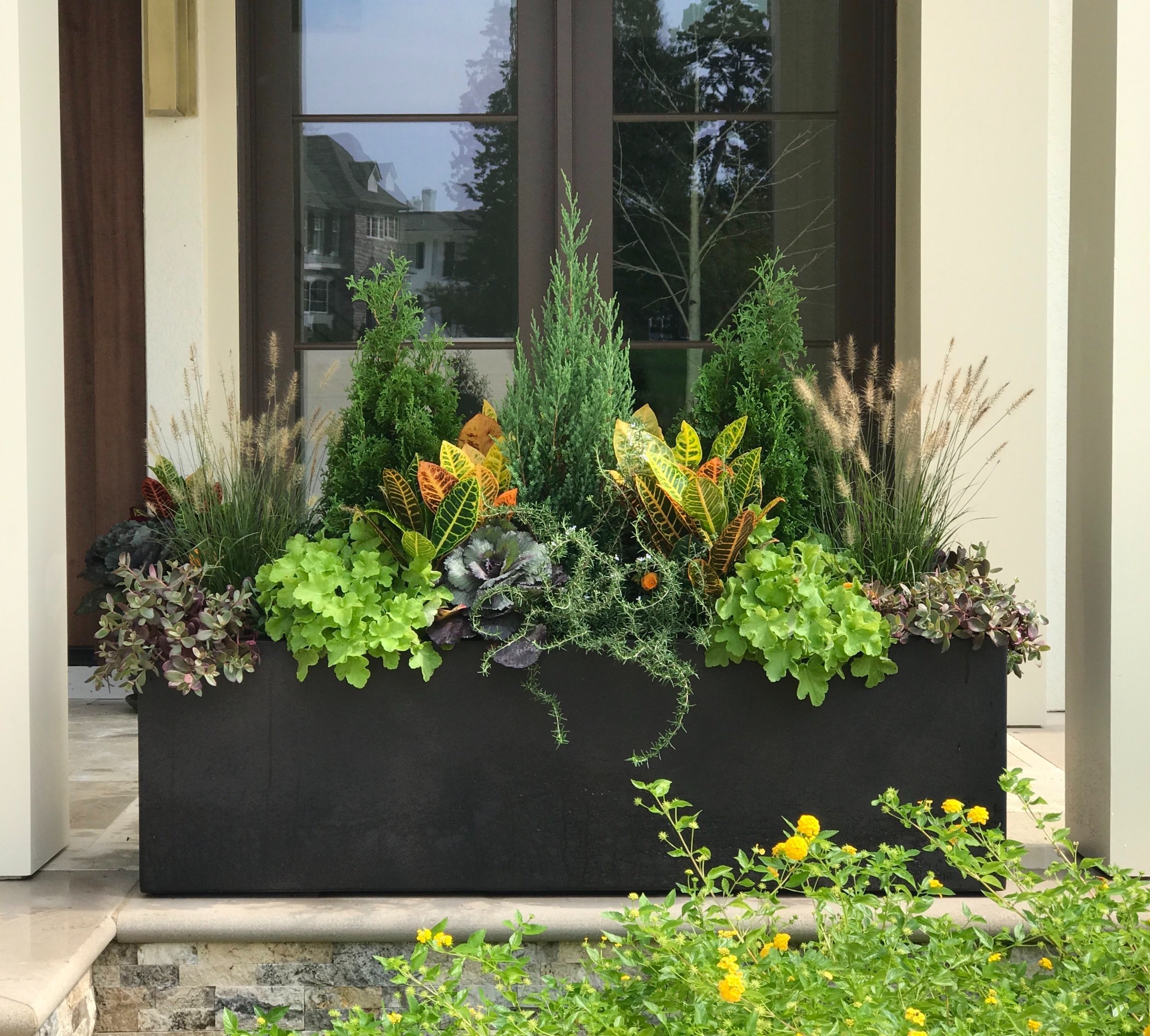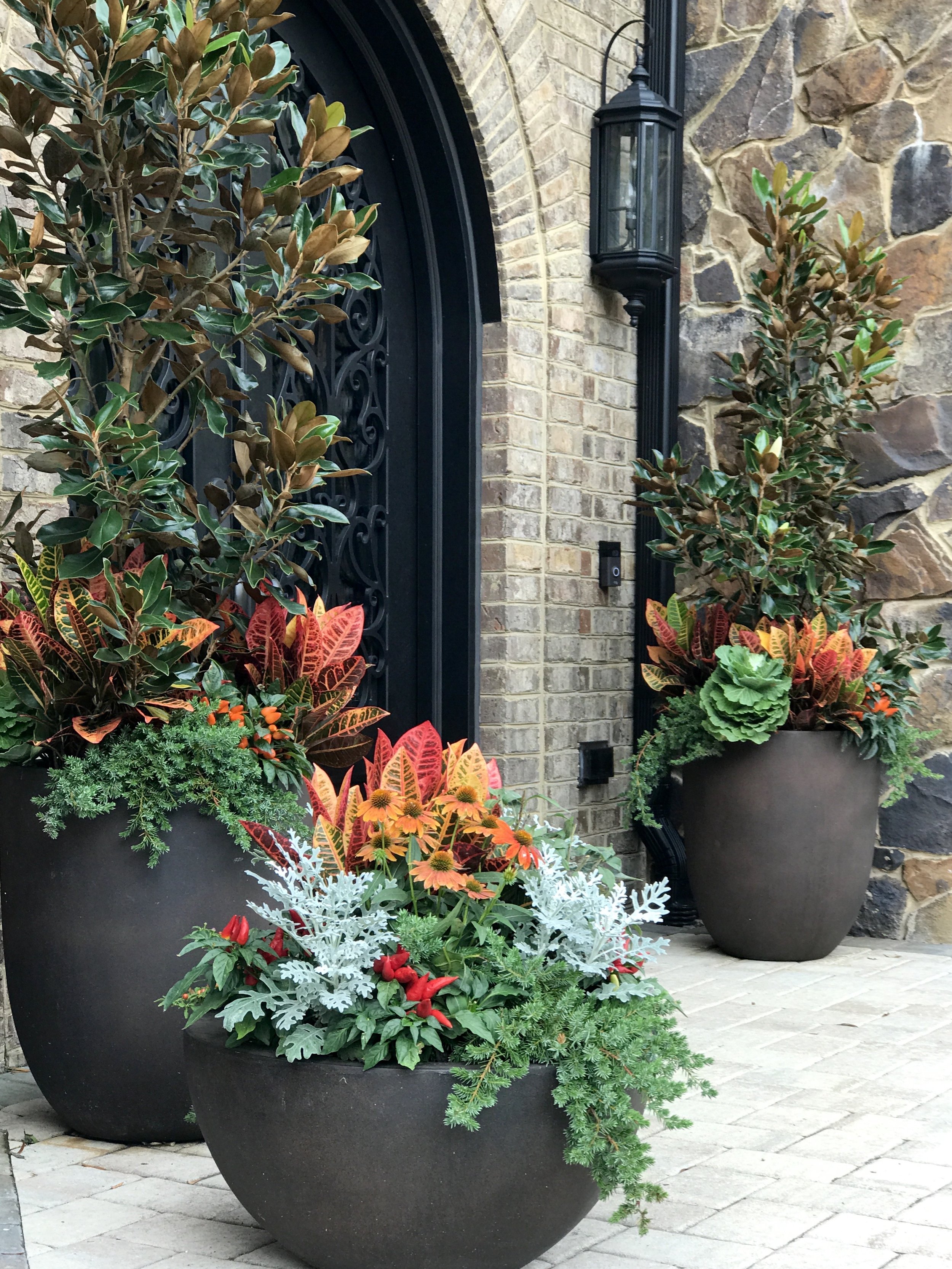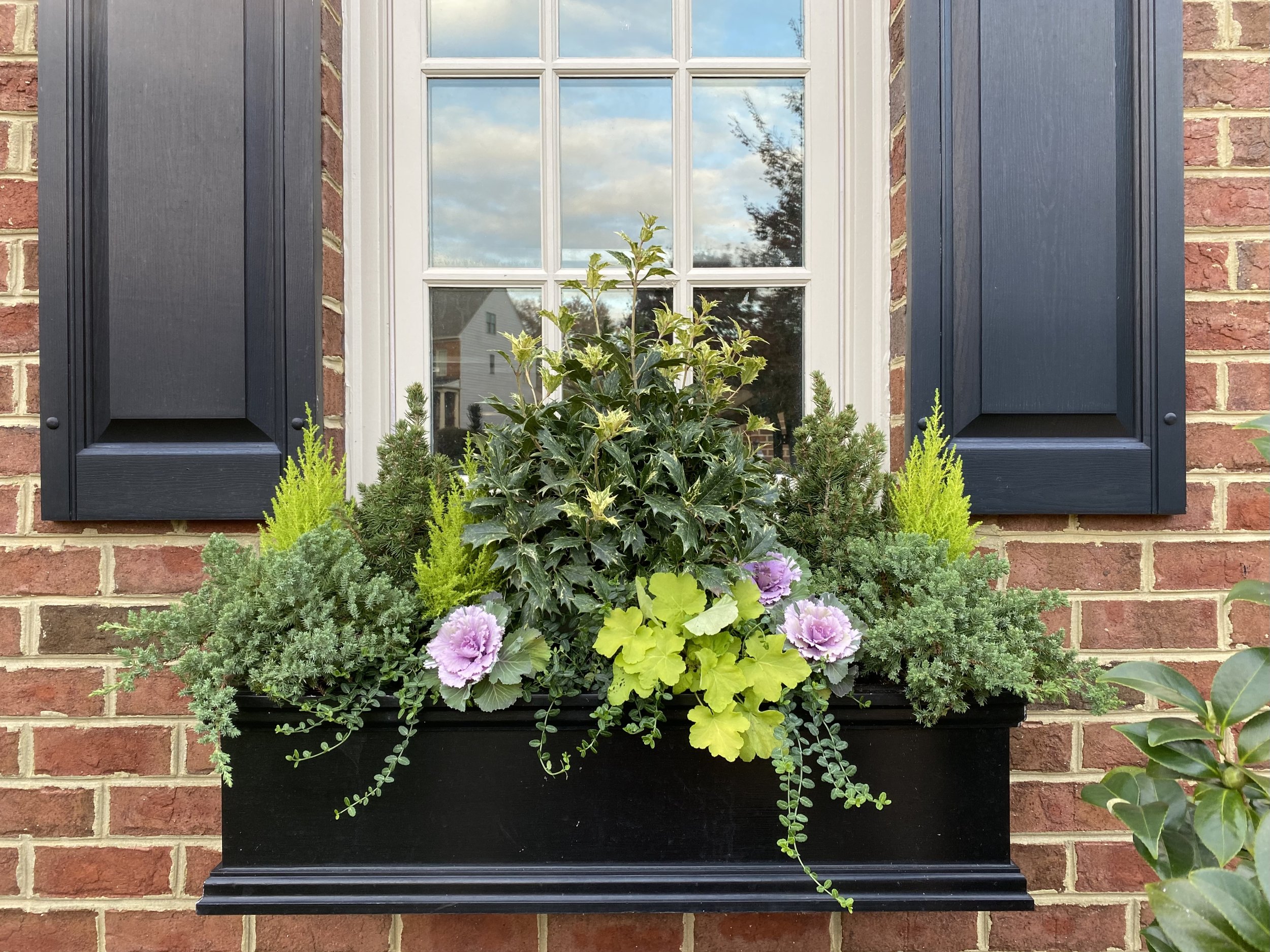Using Evergreens in Container Gardens
I’ve been using evergreens in container gardens since the very beginning. The approach is practical, saves money over time, and offers multiple seasons of enjoyment. I can’t imagine a DIY-er or client who wouldn’t LOVE getting these benefits from their container gardens.
When to Plant Evergreens in Containers
While you can install an evergreen almost any time of year in Zones 7 and higher (warmer), I prefer to plant them in containers in the Spring or the Fall, much like you would if you were planting them in the ground. This gives the roots time to get established and comfy before the heat of the Summer or the bitter cold of Winter. I find the selection of evergreens at retailers peaks in Spring and Fall, which also makes these the ideal times to shop for the perfect specimens for your pots.
If you live in a colder climate, Zone 6 and lower (cooler), do some research before experimenting with evergreens in winter containers. Read the plant tags and ask a pro at your local garden center for tips on winterizing. In the coldest regions, they may recommend you wrap your pots in burlap for extra insulation from the snow and wind. It really depends greatly from region to region, and from plant to plant. To avoid costly mistakes, read up and ask questions before you start.
Types of Evergreens for Container Gardens
The bottom line: you can incorporate almost any evergreen into a container garden. For the longest lasting options that won’t outgrow your pots too quickly, choose small, slow-growing, or dwarf varieties. Generally speaking, evergreens last 1-2 years before they need to be transplanted to a larger pot or to the ground. Variables such as the size of your pot, the specimen you use, and your growing environment will all impact this timeframe.
Evergreens are lumped into two main categories, coniferous and broad-leaved. I use both kinds, often mixed together. I love the way the needles of conifers stand out against the smooth surface of broad-leaved varieties, and vice versa!
Coniferous
Conifers bear cones and have needle-like leaves. While they may feel “Christmassy”, they can take on an entirely new vibe when surrounded with colorful flowers and lush foliage outside of the winter season. Most of the conifers I work with prefer at least partial (4-6 hours) if not full (6 hours or more) sun, which matches the light preference of many of the flowers I like to plant with them in spring and summer.
My go-to conifers for adding height to container gardens are Dwarf Alberta Spruce, Deodar Cedar, Carolina Sapphire Cypress, Fat Albert Colorado Blue Spruce, and Blue Point Juniper. For lower arrangements, I love the round dome habit of Globosa Nana Dwarf Japanese Cedar. Trailing Juniper is a nice, tough coniferous spiller.
CONIFERS IN SPRING POTS
Faux forsythia stems bring spring color up into these Blue Point Juniper
Broadleaf
Broadleaf evergreens have flatter green leaves that stay on the tree or shrub year-round. My favorites are Green Velvet Boxwood (mounded ball shape), Green Mountain Boxwood (pyramidal), and Teddy Bear Magnolia. Hardy English Ivy and Kewensis Euonymous are charming broadleaved spillers.
Designing with Evergreens in Container Gardens
The possibilities are endless when designing with evergreens.
ONE-PLANT WONDERS
This is my nickname for container gardens featuring one glorious specimen. It’s a nice clean look and very easy to plant. Boxwood in ball or pyramid form create the most dense, clean, and classic look. For a more economical approach, try Globosa Nana as shown here.
SKIRTING
This refers to dressing the base of an evergreen with filler and spiller plants to create a “skirt” at the bottom. This is a great approach if you want to keep your evergreen in place all year, but change out the flowers and foliage each season. Think of your evergreen as the thriller, or centerpiece, when using this strategy.
Thrillers, Fillers, Spillers
Evergreens can actually play any and all of these roles in container gardens. Taller varieties can act as the thriller in an arrangement to create height. Mid-tier, mounding varieties can serve as fillers. Trailing specimens can act as spillers. For more beautiful examples of designing with evergreens as thrillers, fillers, and spillers, read about the holiday container design challenge sponsored by Monrovia® and Digging In Gathering HERE.
Thriller: Goshiki Osmanthus. Fillers: Dwarf Alberta Spruce, Lemon Cypress. Spillers: Trailing Juniper, Kewensis Euonymus.
CLUSTERING
Try using multiple evergreen specimens in one large pot with varying heights, colors, and textures to create the feeling of a miniature forest or landscape. On a larger scale, cluster several pots together, but feature only one specimen in each. Notice how I edited the cluster from the Winter (below left) to transition it to Summer (below right).
How to Plant and Care for Evergreens in Container Gardens
Because you’re planting in a confined space (a pot), I recommend potting mix as your planting medium. This will help provide appropriate drainage and airflow.
Water all year round, except during those weeks or months when the soil is frozen solid. Prune stray branches to maintain the shape of your trees or shrubs, just as you would in the landscape.
Points to Ponder
As in any season and style of container gardening, I encourage you to experiment. Try a new plant or mix of plants you’ve never used before. Savor the process of piecing together a design as you shop your local garden centers. Enjoy the time you spend getting your hands dirty.
Just go plant something!
XO,
Steph










